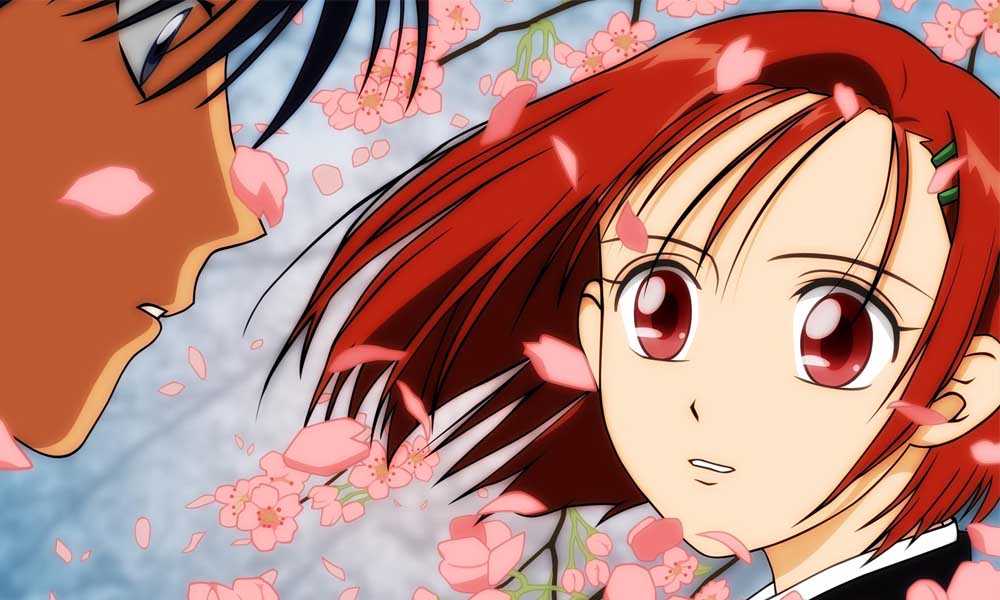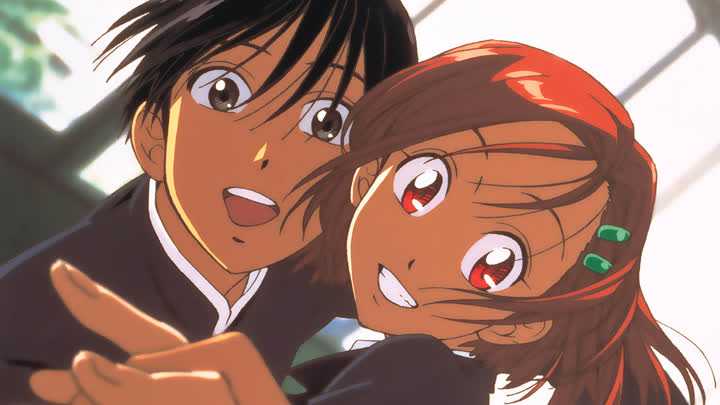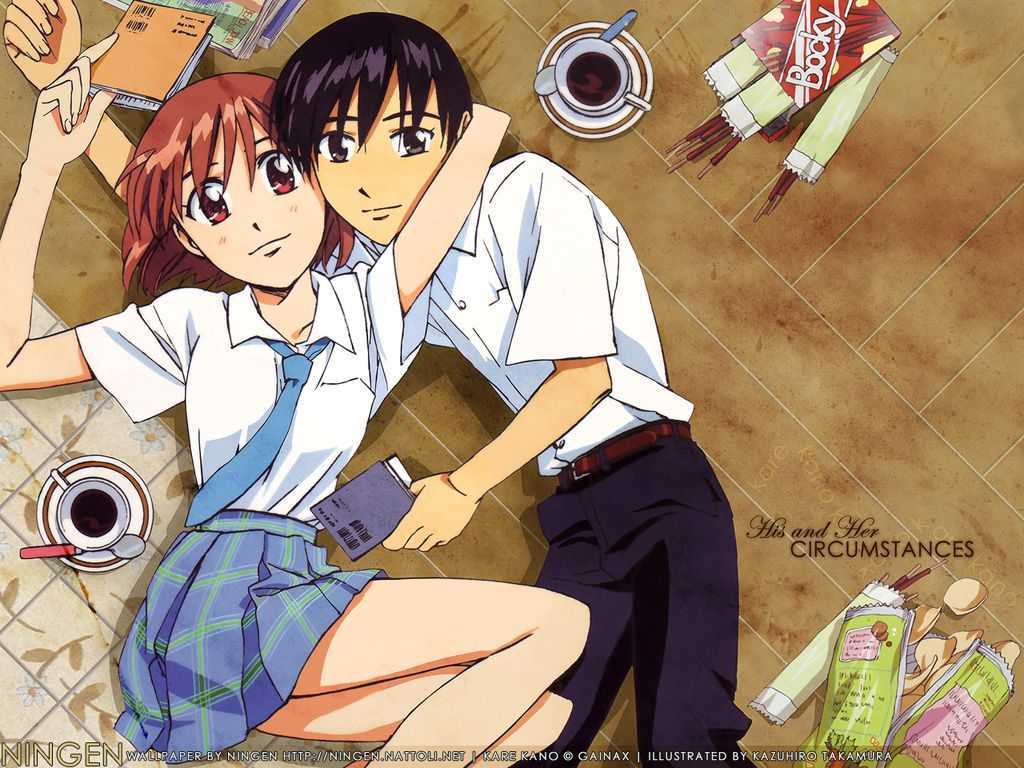Welcome back to the appointment dedicated to anime and their comparison with manga: today we present The Situation of Him and Her, by Masami Tsuda
In the manga presented so far, we have tried to talk about stories belonging to different genres, showing protagonists with very different characteristics and qualities from each other.
But when dealing with the “manga” theme, one cannot fail to mention the type that has made this product famous all over the world: that is the Shojo. The term indicates a category of manga and anime aimed mainly at a female audience, starting from school age up to the age of majority.
Among the variants, the main theme is always the same: the events of a group of teenagers who face love, friendship and the first difficulties of life.
With the Situations of him and her, written and drawn by Masami Tsuda, love, in the deep meaning of the term, is inserted in the school context and seasoned with flashes of psychological reflections. This last aspect makes it a product different from its peers.
The manga was published in Japan in the magazine LaLa of Hakusensha from February 1996 to April 2005. While in Italy the Dynamic Italia, publishing it from April 2002 to March 2006 on the Romance series.
An anime was made between October 1998 and March 1999 26 episodes from the studio Gainax. This differs in several points from the manga, which is why the studio preferred to block the narrative in correspondence roughly the volume 7. In Italy, MTV it aired it for the first time, between April and December 2002, in the Anime Night container.
The anime is available for viewing on the platform VVVVID.

Plot and trailer | The Situations of Him and Her by Masami Tsuda
Yukino Miyazawa she is a first-year high school student, envied by all for her beauty, distinguished demeanor and excellent academic results. However, it is not what it seems. In fact, behind Yukino’s impeccable public behavior hides a spoiled, lazy and stubborn girl, with a spasmodic desire to always feel appreciated, praised and the center of attention.
His secret, however, is discovered by Soichiro Arima. Arima is an equally handsome, intelligent and popular guy, who accidentally discovers Yukino’s true personality and starts blackmailing her. But he too hides what he really is. Animated by the deep desire not to disappoint his adoptive parents, he shows himself as he is not.
Initially as rivals, Arima declares her love to Yukino and, despite her rejecting him at first, the relationship between the two grows ever closer. The two, first as friends, then as something more, consolidated their love for each other, promising to abandon the mask they were wearing.
Masks | The Situations of Him and Her by Masami Tsuda
The anime, with its melancholy features, is a real one hymn to adolescence and first falls in love. Unlike what we are used to seeing in the series taken from Shojo manga, the protagonists are well characterized, presented with all the many facets that only the first love can give. Furthermore, the story is charged with an introspective deepening of the feelings and all those sensations that a boy and a girl carry with them at fifteen, linked to questions for which you do not have the answers and an inner world that you want to hide from others.
Just the deprived aspect of their character, is the thrust that triggers the whole story.
Yukino and Arima show themselves as they are not, as they have decided that others should see them; until, falling in love with each other, they realize how liberating it is to leave mask worn for many years and finally make themselves known.
Far from calling itself a trivial romantic story about two guys getting engaged, the manga explores their relationship in depth. We talk about the difficulties in a relationship, the first sexual experiences, of starting to discover and understand each other.
Lightness and naivety, given the target of the original manga, they obviously can’t miss. However, given the absolute freshness with which the story is told (funny and often even hilarious) you can let it go.
In revealing the deepest part of their characters, the two boys find themselves more alike than they thought. Lost in a whirlwind of new emotions, they will be able to hold hands and face the great monster that bears the name of “adolescence”.

A multi-sided tale | The Situations of Him and Her by Masami Tsuda
To make the viewer even closer to the story, often feeling attracted by the feelings shown, it is certainly the work of the stylistic choice adopted.
The credit goes to the great contribution of the director Hideaki Anno.
His style, peculiar and decidedly experimental, alternates classic Japanese animation with long fixed shots, very close to seemingly irrelevant details and a large use of writings and onomatopoeias. As well as animation, the drawings also vary a lot according to the narrative moment; normal drawings, then still images with pastel colors, light and dark games, comics, insertion of live-action scenes, use of the super deformed style and many other graphic inventions.
Just this great variety of styles, especially of the images, it allows to perceive the thoughts of the protagonists, almost to be able to see and touch them. It also allows us to participate in their story, to live it as if we were inside the story, to be the true witnesses of the entire evolution of their relationship.

Conclusions, a bitter ending
The first limit de The situations of him and her it’s the bad distribution of his budget, source of a very strong difference between the first half of the series, masterfully animated, and the second, characterized by recaps and episodes made with poor and more or less useless visual effects.
Another problem is the abandonment of Hideaki Anno to direct from episode 18, due to quarrels with the author of the manga. She, dissatisfied with his experimentalisms, pushed for his place to be replaced by Kazuya Tsurumaki.
The change of style due to the replacement of Anno, a less experimental and more routine direction and the low budget available to the series, meant that even the ratings dropped. Consequently, the final, or rather not the final, ruins all that is good, truncating the story with a conclusion that leaves a thousand questions and no answers … unless you have read the manga.















